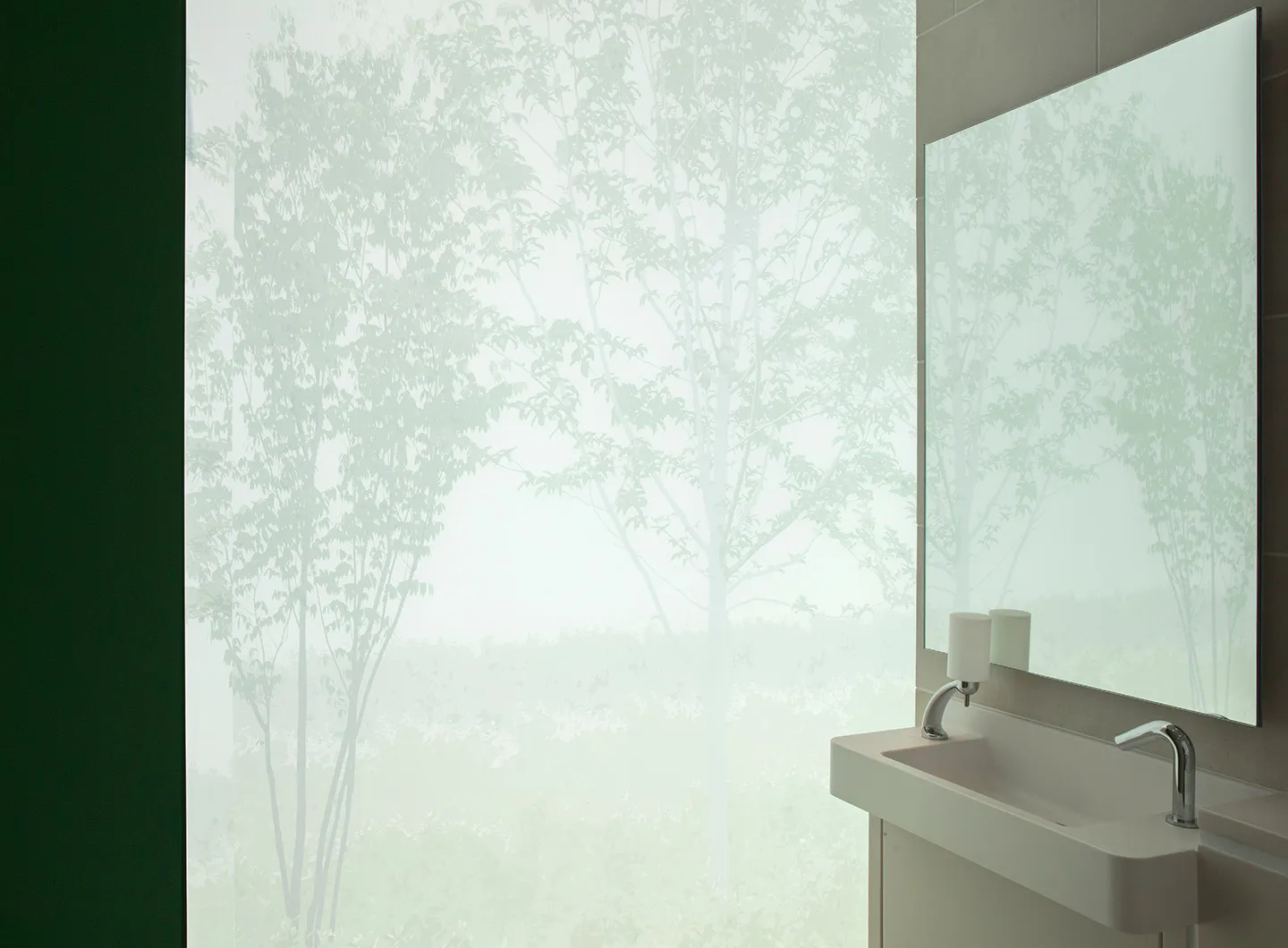The furniture and design segment dedicated to life en plein air. Interview with Roberto Pompa of the Assarredo Presidential Council as well as President of Roda
The Tokyo Toilet

Haru-no-Ogawa Community Park - Shigeru Ban - Photo Satoshi Nagare, Courtesy The Nippon Foundation
In different colours and a huge variety of shapes, in concrete or transparent, at night Tokyo's new public toilets become glowing lanterns. Channelling cleanliness, safety and technology.
Japan is known for its extreme and painstaking cleanliness. It must be one of the most hygiene-conscious countries in the world. Whose thoughts don’t turn to the Tokyo subway, the city’s (non) place par excellence, renowned for its impeccable cleanliness, brightly shining floors and total absence of litter? Venturing into the intimacy of the country, even the public lavatories – the koshu toilet – are remarkably clean, but they are seldom used, because in the collective imagination they are seen as dirty, smelly and scarily dark. In order to quash these prejudices, the Nippon Foundation – the historic non-profit organisation set up in the Seventies by the businessman and philanthropist Ryoichi Sasakawa – decided to become involved, along with the municipal government and local tourist board, in the renovation of one of the city’s most trendy districts, Shibuya, famous for its shops, fashionable bars, restaurants, discotheques and various forms of entertainment. Sixteen of the most prestigious architects on the contemporary scene were brought in: Tadao Ando, Shigeru Ban, Sou Fujimoto, Toyo Ito, Masamichi Katayama, Kengo Kuma, Junko Kobayashi, Fumihiko Maki, Marc Newson, NIGO®, Miles Pennington, Takenosuke Sakakura, Kashiwa Sato, Kazoo Sato, Nao Tamura and Tomohito Ushiro.
The keywords: avantgarde technology and design. The objective: to make the lavatories accessible to all, regardless of gender, age and disability (toilets for ostomates), demonstrating the inclusive nature of Japanese society. The facilities are free of charge, and a continuous maintenance and cleaning service ensures that the spaces are kept in tiptop condition, as well as fostering a welcoming feel. In Japan, toilets have always been a symbol of the country’s hospitality culture.
Seven of the seventeen lavatories are already up and running as of August, and the others are set to open in Spring 2021. The first seven include those in Ebisu Park and near Ebisu station, designed by Masamichi Katayama and Nao Tamura, respectively; and the one in Nishihara Itchome Park designed by Takenosuke Sakakura. The designers also include three Japanese Pritzker Prize winners: Shigeru Ban, with the toilets in the Yoyogi Fukamachi Mini Pari and the municipal Haru-no-Ogawa Community Park, Tadao Ando with those in Jingu-Dori Park and Fumihiko Maki with those in Ebisu East Park.
Each of the facilities has its own individual character and slots perfectly into the space for which it’s been designed. An extremely narrow plot next to Ebisu railway station inspired Nao Tamura – first prize at the SaloneSatellite Award in 2010DA VERIFICARE – to design a triptych-building, a striking flash of red amid the grey urban landscape, with three staggered entrance/wings onto the street. All in the name of safety, privacy and urgency.
Masamichi Katayama’s project, on the other hand, was inspired by the Japanese kawaya Neolithic baths of the Jomom period, the precursors of the bathrooms of today. A deliberately ambiguous space made up of 15 interlocking concrete walls, that aims to be an object as well as a facility, it is also a beacon that allows the light to trickle from the gaps between one wall and another.
Takenosuke Sakakura has created an actual translucid box that lights up like a lantern – andon – at night, hence its name. It invites passers-by to make use of it in complete safety, while the narrow green doors echo the surrounding greenery.
Shigeru Ban’s toilets in Yoyogi Fukamachi Mini Park and Haru-no-Ogawa Community Park are extremely technological. Their coloured transparent walls – orange, pink and purple in the former; blue and green in the latter – become opaque as soon as the toilets are occupied, reflecting the outlines of the surrounding trees.
Tadao Ando wanted to create an actual “place”: a section of upturned cone, covered with a projecting circular canopy, creates a meeting place, or perhaps, a shelter from the rain, as its name, Amayadori, suggests.
Fumihiko Maki’s project, in an area known as the “Octopus Park” after a sculpture/slide in the shape of the tentacular aquatic animal, consists of a themed building - the Squid Toilet – topped with a thin roof and built to a very articulated, almost tentacular plan, which in turn aims to look like a play area.
The facilities are being built by Daiwa House Industry, while the renowned Japanese toilet manufacturer Toto is supplying the equipment.
The project demonstrates the possibilities of an inclusive society and the respect for hospitality through a public place, commonly seen as just a service area.





















